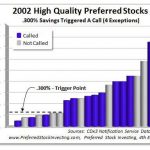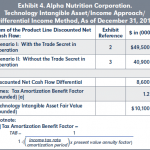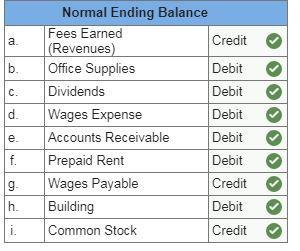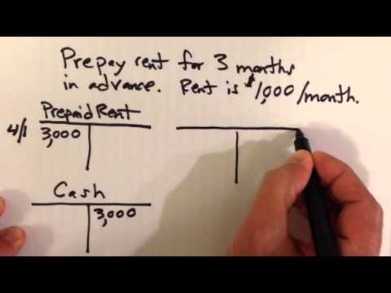Alcohol Bloating: Face, Stomach, Weight Gain, and How to Get Rid of It
January 28, 2021Alcoholic Musicians List of Musicians Who Died From Drinking
June 29, 2021
Furthermore, governments are typically reluctant to fully embrace financial and monetary changes that they can exert little control over. As an accountancy expert, you’re likely relied upon for your skills in keeping records, ensuring standards are met, and dealing with complex regulations and rules. Because of how trustworthy blockchain technology is, it’s having an impact on how auditing is done. Furthermore, implementing blockchain technology also reduces the cost of maintaining records of transactions.
What Are the Challenges with Applying Blockchain Technology?
Therefore, the essential benefits perceived by practitioners are unclear but seem to include reductions in time-consuming activities and the need for additional opinions. Alternatively, a firm may adopt a distributed private network, which is more like a traditional transaction ledger. Members will be independent, third-party (e.g., vendors, customers, lenders, external auditor) stakeholders that have no direct interest in colluding with other members. Recent accounting scandals and financial restatements, however, indicate that no system is impervious to collusion.
Where accounting really stands with blockchain

This framework allows for a more accurate literature analysis by investigating undiscovered approaches that have yet to be scientifically validated. Furthermore, as Paul and Criado (2020) indicate, reviews should aim to launch new ideas, theories, measures, methods and RQs. In this sense, code analysis allows us to discover new variables and better highlight possible future research journeys. First, implementing bibliometric analysis makes it possible to derive useful information such as time period, documents’ information, sources, authors, keywords, citations and countries.
Data analysis and results
In a critical study published in the AAAJ, Dumay et al. (2018) state that scientific production in accounting includes and is extended to auditing and accountability. Furthermore, all researchers have benefited from Massaro et al. (2016)’s research strategy. Considering that we are analyzing an emerging and continually evolving field of research, we included all sources in the database, including peer-reviewed articles and conferences as sources of knowledge (Easterby-Smith et al., 2012). We used Scopus, a multidisciplinary database that includes the study of several data-suited information science researchers (Okoli and Schabram, 2010). The articles retrieved from Scopus were compared with the Web of Science database to ensure no significant sources were missed. In terms of literature reviews published in other sources, some consider this field using different lenses and focus.
Blockchain accounting applications can also make it easier for accountants to file tax returns. With the work of authenticating transactions done for you, you can focus on finding inaccuracies or discrepancies in your clients’ transactions and ensuring that their tax information is correct. In the event of an audit, all relevant information is laid out in one convenient format.
Researchers who wish to access the data to verify the findings or conduct further research may contact the corresponding author. The study acknowledges the potential for CMB and aims to minimize it by meticulously designing the questionnaire and ensuring respondents’ anonymity. Additionally, the study employed statistical techniques, including the variance inflation factor (VIF) test, to assess CMB (Kock, 2015). Despite considering non-response bias, the study aimed to mitigate its impact by promoting clear communication, providing reminders, and emphasizing the significance of each respondent’s input. This research adopts a quantitative study design, employing a moderated model based on TAM.
In Section 2, we discuss the concept of blockchain as an accounting technology. Section 3 outlines the methodology used for the review, followed by the results in Section 4. The most representative articles are analysed in Section 5, with future research directions https://www.accountingcoaching.online/ discussed in Section 6. Section 7 concludes the paper with the implications of this research for theory, practice and policy, along with the limitations of the study. With smart contracts, transactions automatically go through when certain conditions are met.

Still, blockchain technology offers a promising platform that is more secure and transparent than the technology we use today. Broadly speaking, financial systems—especially accounting systems—are being pushed from the physical world to the digital world. To some, blockchain represents a “movement” rather than a technology and describes migration https://www.personal-accounting.org/difference-between-public-privately-held-companies/ to blockchain technology as a form of risk mitigation to avoid technological obsolescence. To others, blockchain technology is essentially about reducing information risk and providing trust regarding accounting data. The implementation of the technology involves addressing significant challenges, but also has numerous potential advantages.
- Venkatesh and Bala (2008) define perceived ease of use (PEU) as an individual’s perception of how simple it is to use a particular technology without substantial effort.
- They explore the top-cited papers, most productive countries and most common keywords used.
- ATU positively influences the intention to adopt and integrate blockchain technology within accounting education.
- The main aim of the present study is to review the literature on the use of blockchain in accounting practice and research and to define potential opportunities for further investigation.
Second, the focus on the sustainability of blockchain-related business models in accounting and auditing is not yet developed. A common feature to accounting, auditing and accountability is decentralization. This feature revolutionizes how accounting data are accessed as it allows all actors in the chain to obtain history, real-time updating and final reporting. The subsection aims to specify how blockchain affects companies, considering the classification of accounting, auditing and accountability (Dumay et al., 2018). Specifically, accounting studies cover normative, advance or critique studies investigating the role in society. Finally, accountability refers to an inclusive discussion on corporate disclosure for both the private and public sectors.

If buying and selling cryptocurrencies was part of the ordinary business of an entity, then it would be possible to account for cryptocurrencies as inventory. 9 states, “Inventories shall be measured at the lower of cost and net realizable value,” and if a company is a broker-trader, then it can value cryptos at fair value less cost to sell (Procházka, 2018; Morozova et al., 2020). The advent of cryptocurrencies has also raised questions about the role of central banks. Currently, central banks continue to supply money, both virtually and physically.
Interesting, even over such a short period, interest in some topics is already waning, e.g. “FinTech in banking”, “cryptocurrencies and cryptoassets”, and “blockchain and taxation”. With this in mind, and given the overwhelming interest in just a handful of topics, we focused the rest of our analysis on the top how to calculate the payback period four topics. The results emphasize the importance of PU in shaping educators’ attitudes and intentions toward incorporating blockchain technology in accounting education. Prior research, such as studies by Kshetri (2018), Smith (2017), Chen et al. (2018), and Quinto (2022), has recognized the key role of PU.
The leading journals deal with the topic of technologies and information applied to accounting, auditing and accountability. Although there is beneficial interest motivated by the possible reduction of costs in the accounting, auditing and accountability field, many elements still need clarification. For example, according to Kokina et al. (2017), one of the first research problems concerns accounting data ownership and transparency in their decentralization. Besides, blockchain’s characteristics and definitions in this area are unclear (Kokina and Davenport, 2017; Schmitz and Leoni, 2019). Still, few studies question which theoretical areas of accounting blockchain are persisting (Bonsón and Bednárová, 2019).
Blockchain technology is a system of storing and transferring data that benefits the Accounting industry. Unlike Traditional Accounting, where different parties keep separate ledgers that can lead to discrepancies, inefficiencies, and delays in data sharing, Blockchain technology offers a new way of managing financial records. Blockchain has the potential to enhance the accounting profession by reducing the costs of maintaining and reconciling ledgers, and providing absolute certainty over the ownership and history of assets.
